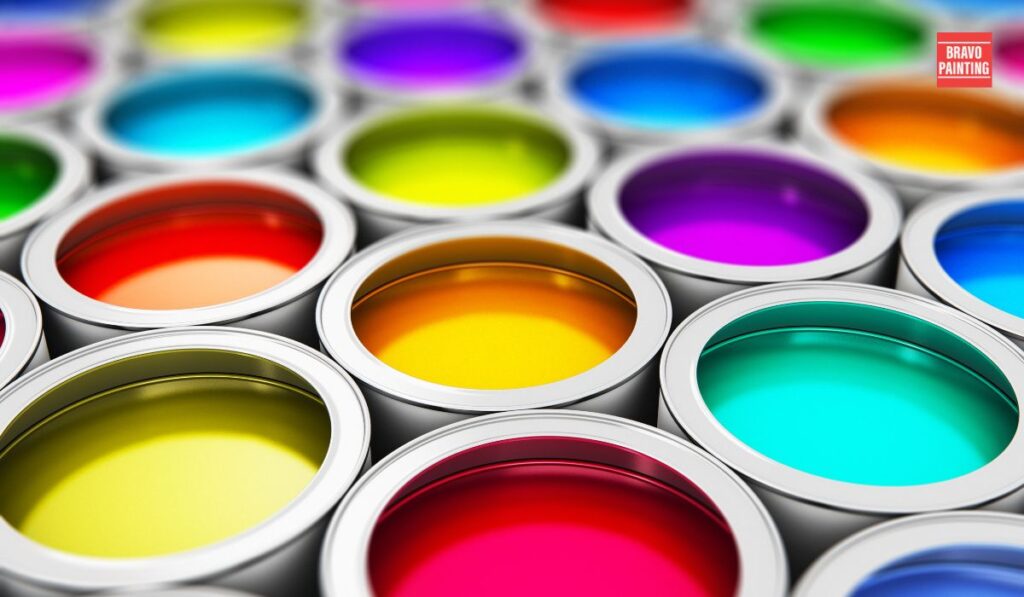Choosing between solid stain and paint for your home can be a significant decision, impacting both its aesthetic appeal and long-term maintenance requirements.
Both options offer unique advantages and considerations, making it essential to understand their differences before making a choice.
This article aims to explore the characteristics, benefits, and drawbacks of solid stain and paint, helping homeowners make informed decisions about which option suits their needs best.
Understanding Solid Stain:
Solid stain is a type of finish that penetrates the surface of wood or other porous materials, providing color while still allowing the natural texture and grain to show through.
Unlike paint, which forms a thick, opaque layer on the surface, solid stain creates a semi-transparent or opaque finish, depending on the number of coats applied. It offers several advantages:
Retains Natural Texture: Solid stain enhances the natural beauty of wood by accentuating its grain and texture.
Unlike paint, which can obscure these features, solid stain allows them to shine through, creating a more organic and rustic appearance.
UV Protection: Solid stains often contain additives that provide protection against ultraviolet (UV) rays, preventing the wood from fading or graying over time.
This UV resistance helps prolong the lifespan of the surface and maintain its vibrant color.
Moisture Resistance: Solid stain forms a protective barrier against moisture, preventing water penetration and reducing the risk of rot, mold, and mildew.
This makes it an ideal choice for exterior surfaces exposed to rain, snow, and humidity.
Low Maintenance: Compared to paint, solid stain typically requires less maintenance over time.
While both options may require periodic reapplication, solid stain tends to fade more gracefully, avoiding the need for extensive scraping and sanding during refinishing.
However, solid stain also has some limitations:
Limited Color Options: Solid stain offers a narrower range of colors compared to paint.
While this may be sufficient for some homeowners, those seeking a broader spectrum of hues may find their choices somewhat constrained.
Less Concealing Power: While solid stain can cover imperfections to some extent, it may not provide as thorough coverage as paint, especially for surfaces with significant flaws or blemishes.
Multiple coats may be required to achieve the desired opacity.
Understanding Paint:
Paint is a versatile coating that forms a thick, opaque layer on the surface, providing color, protection, and durability.
Unlike solid stain, which penetrates the material, paint sits on top of the surface, masking its natural texture and grain. Here are some benefits of using paint:

Extensive Color Options: Paint offers an extensive array of colors, allowing homeowners to customize their surfaces to match their preferences and existing decor. From bold and vibrant hues to subtle and muted tones, the possibilities are virtually limitless.
Superior Coverage: Paint provides excellent coverage, effectively concealing imperfections, stains, and discolorations on the surface.
This makes it particularly suitable for hiding flaws in older or weathered materials, resulting in a smoother and more uniform appearance.
Durability: Paint forms a robust and durable barrier against environmental elements, including UV radiation, moisture, and temperature fluctuations.
It helps protect the underlying surface from damage, extending its lifespan and reducing the need for frequent maintenance.
Versatility: Paint can be applied to a wide range of surfaces, including wood, metal, concrete, and masonry.
Its versatility makes it suitable for both interior and exterior use, allowing homeowners to maintain consistency in their decor and design aesthetic.
However, paint also comes with certain drawbacks:
Conceals Natural Texture: Unlike solid stain, paint covers the natural texture and grain of the surface, resulting in a more uniform but less organic appearance.
Some homeowners may prefer the rustic charm of exposed wood, which paint tends to obscure.
Prone to Cracking and Peeling: Over time, paint may develop cracks, chips, or blisters, especially on exterior surfaces exposed to harsh weather conditions.
This can necessitate periodic repainting or touch-ups to maintain the integrity and appearance of the finish.
Choosing the Best Option for Your Home:
When deciding between solid stain and paint for your home, several factors should be taken into account:
Surface Material: Consider the type of material you’re coating, whether it’s wood, concrete, or another substrate.
Some materials may lend themselves better to solid stain, while others may require the coverage and protection offered by paint.
Desired Aesthetic: Think about the look and feel you want to achieve.
If you prefer a natural, textured appearance that showcases the beauty of the underlying material, solid stain may be the better choice.
However, if you’re aiming for a smooth, uniform finish with a wide range of color options, paint might be more suitable.
Maintenance Requirements: Evaluate your willingness and ability to maintain the finish over time. While both solid stain and paint require periodic maintenance, the frequency and intensity of upkeep may vary. Consider your lifestyle, climate, and available resources when making your decision.
Long-Term Goals: Think about your long-term plans for the property. If you’re looking for a durable, low-maintenance solution that will stand the test of time, paint may be the preferred option.
However, if you prioritize preserving the natural beauty of the surface and don’t mind occasional refinishing, solid stain could be the way to go.
Environmental Considerations: Another aspect to take into account is the environmental impact of your choice.
Both solid stain and paint contain chemicals and additives that may have implications for air quality and environmental sustainability.
Researching the eco-friendliness of the products you’re considering can help minimize your carbon footprint and contribute to a healthier environment.
Budgetary Constraints: Cost is another crucial factor in the decision-making process.
While both solid stain and paint come in a range of price points, factors such as material quality, brand reputation, and application method can influence overall expenses.
Consider your budget carefully and explore different options to find the best balance between affordability and quality.
Consultation with Professionals: If you’re unsure about which option is best for your home, don’t hesitate to seek advice from professionals such as painters, contractors, or home improvement specialists.
They can assess your specific needs, evaluate the condition of your surfaces, and provide valuable insights and recommendations tailored to your situation.
Test Samples: Before committing to a large-scale application, it’s advisable to test samples of both solid stain and paint on a small, inconspicuous area of the surface.
This allows you to observe how each option interacts with the material, assess color accuracy, and evaluate the overall aesthetic effect.
Additionally, testing samples can help you determine the level of coverage, durability, and ease of application of each product.
Consideration of Regional Factors: Climate and environmental conditions vary from region to region, influencing the performance and longevity of coatings such as solid stain and paint.
Factors such as temperature fluctuations, humidity levels, and exposure to sunlight can impact the durability and maintenance requirements of the finish.
Take into account the specific conditions of your geographic area when making your decision.
Flexibility for Future Changes: Keep in mind that your preferences and circumstances may evolve over time.
Choosing a finish that allows for flexibility and adaptability can be advantageous if you anticipate making changes to your home’s aesthetics or functionality in the future.
Consider options that offer easy reapplication or compatibility with alternative finishes to accommodate potential updates or renovations down the line.
Conclusion:
In conclusion, the decision between solid stain and paint for your home involves careful consideration of multiple factors, including surface material, aesthetic preferences, maintenance requirements, environmental considerations, budget constraints, consultation with professionals, sample testing, regional factors, and flexibility for future changes.
By weighing these factors thoughtfully and thoroughly, you can make an informed choice that enhances the beauty, durability, and sustainability of your home’s surfaces for years to come.
Whether you opt for the natural elegance of solid stain or the versatility of paint, the key is to select the option that aligns best with your priorities, lifestyle, and long-term goals.
For professional guidance and top-quality painting services, visit Bravo Painting.
FAQs
What is solid stain, and how does it differ from paint?
Solid stain is a finish that penetrates the surface of wood or porous materials, enhancing color while allowing the natural texture and grain to show through. In contrast, paint forms a thick, opaque layer on the surface, masking its natural features.
What are the advantages of using solid stain?
Solid stain retains the natural texture of wood, provides UV protection, offers moisture resistance, and requires less maintenance compared to paint.
Are there any limitations to using solid stain?
Solid stain may offer fewer color options compared to paint and may not conceal imperfections as thoroughly, especially on surfaces with significant flaws.
What are the benefits of using paint?
Paint offers extensive color options, superior coverage to conceal imperfections, durability against environmental elements, and versatility in application.
Are there any drawbacks to using paint?
Paint covers the natural texture of the surface and is prone to cracking, peeling, and requiring periodic repainting or touch-ups, especially in harsh weather conditions.
How should homeowners decide between solid stain and paint?
Consider factors such as surface material, desired aesthetic, maintenance requirements, long-term goals, environmental impact, budget, consultation with professionals, testing samples, regional factors, and flexibility for future changes.
What factors should be considered regarding surface material?
Different materials may favor either solid stain or paint based on their properties and maintenance needs.
What is meant by “desired aesthetic,” and how does it influence the choice between solid stain and paint?
Desired aesthetic refers to the preferred look and feel of the surface, whether it’s a natural, textured appearance or a smooth, uniform finish with various color options.
How can homeowners assess maintenance requirements when choosing between solid stain and paint?
Consider lifestyle, climate, available resources, and willingness to maintain the finish over time.
What role do long-term goals play in the decision-making process?
Long-term goals influence whether durability and low maintenance (paint) or preserving natural beauty (solid stain) are prioritized.
How should environmental considerations factor into the decision?
Research the eco-friendliness of products to minimize environmental impact and promote sustainability.


